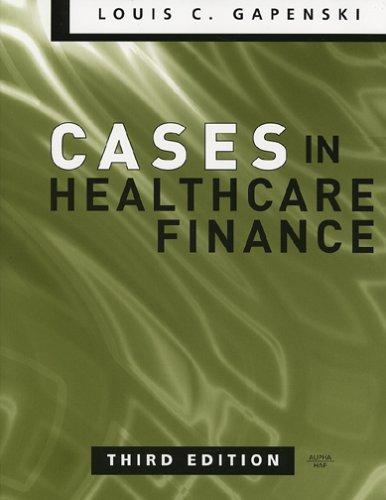Answered step by step
Verified Expert Solution
Question
1 Approved Answer
3. Madison Manufacturing is considering a new machine that costs $450,000 and would reduce pre-tax manufacturing costs by $120,000 annually. Madison would use the 3-year
| 3. Madison Manufacturing is considering a new machine that costs $450,000 and would reduce pre-tax manufacturing costs by $120,000 annually. Madison would use the 3-year MACRS method to depreciate the machine, and management thinks the machine would have a value of $33,000 at the end of its 5-year operating life. The applicable depreciation rates are 33.33%, 44.45%, 14.81%, and 7.41%. Working capital would increase by $35,000 initially, but it would be recovered at the end of the projects 5-year life. Madisons marginal tax rate is 40%, and a 10% WACC is appropriate for the project. | ||||||
| a. Calculate the projects NPV, IRR, MIRR, and payback. | ||||||
| Input Data | ||||||
| Machine cost | ||||||
| Net working capital | ||||||
| Cost savings | ||||||
| Salvage value | ||||||
| Tax rate | ||||||
| WACC | ||||||
| Depreciation Schedule | ||||||
| Years | ||||||
| 1 | 2 | 3 | 4 | |||
| Depreciation rate | ||||||
| Depreciation | ||||||
| Remaining Book Value | ||||||
| Salvage CF | ||||||
| Salvage value | ||||||
| Book value | ||||||
| Tax on salvage value | ||||||
| Salvage CF | ||||||
| Cash Flow Forecast | ||||||
| Years | ||||||
| 0 | 1 | 2 | 3 | 4 | 5 | |
| Machine cost | ||||||
| Net working capital | ||||||
| Before-tax savings | ||||||
| Depreciation | ||||||
| EBIT | ||||||
| Taxes | ||||||
| EBIT(1-T) | ||||||
| Add depreciation | ||||||
| Net Operating CF | ||||||
| Return of NWC | ||||||
| Salvage CF | ||||||
| Net Cash Flow | ||||||
| Key Result | ||||||
| NPV = | ||||||
| IRR = | ||||||
| MIRR = | ||||||
| Cumulative CF | ||||||
| Payback = | ||||||
| b. Assume management is unsure about the $120,000 cost savingsthis figure could deviate by as much as plus or minus 20%. What would the NPV be under each of these extremes? | ||||||
| % Deviation | NPV | |||||
| Cost savings | ||||||
| 20% | ||||||
| -20% | ||||||
| c. Suppose the CFO wants you to do a scenario analysis with different values for the cost savings, the machines salvage value, and the working capital (WC) requirement. She asks you to use the following probabilities and values in the scenario analysis: | ||||||
| Scenario | Probability | Cost Savings | Salvage Value | WC | ||
| Worst case | 0.35 | $88,000 | $28,000 | $40,000 | ||
| Base case | 0.35 | 120,000 | 33,000 | 35,000 | ||
| Best case | 0.3 | 132,000 | 38,000 | 30,000 | ||
| Calculate the projects expected NPV, its standard deviation, and its coefficient of variation. Would you recommend that the project be accepted? | ||||||
| Scenario | Probability | NPV | ||||
| Worst case | ||||||
| Base case | ||||||
| Best case | ||||||
| Expected NPV = | ||||||
| Standard Deviation = | ||||||
| Coefficient of Variation = | ||||||
Step by Step Solution
There are 3 Steps involved in it
Step: 1

Get Instant Access to Expert-Tailored Solutions
See step-by-step solutions with expert insights and AI powered tools for academic success
Step: 2

Step: 3

Ace Your Homework with AI
Get the answers you need in no time with our AI-driven, step-by-step assistance
Get Started


